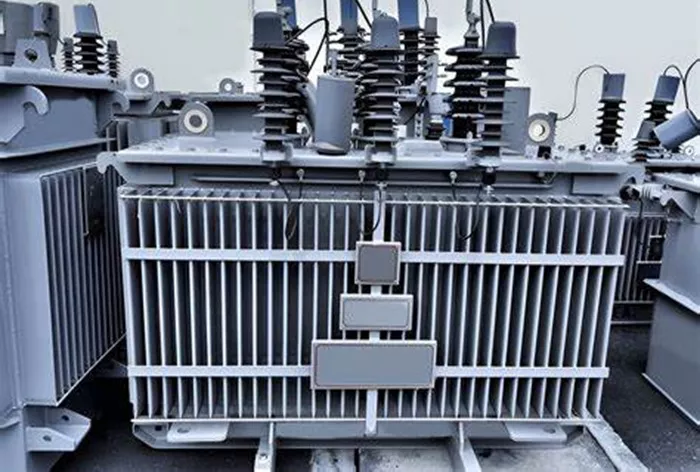Transformers are essential components in modern electrical systems, playing a crucial role in the transmission and distribution of electrical power. They are designed to change voltage levels efficiently, ensuring that electrical energy can be transmitted over long distances with minimal losses and then safely distributed to various consumers. The ability to step up or step down voltage is a fundamental feature of transformers, making them indispensable in both power generation and utilization.
Basic Working Principle
Transformers operate based on the principle of electromagnetic induction, a phenomenon discovered by Michael Faraday in 1831. When an alternating current (AC) flows through the primary winding of a transformer, it creates a varying magnetic field in the core. This magnetic field, in turn, induces a voltage in the secondary winding. The core, typically made of laminated silicon steel, is designed to minimize energy losses due to eddy currents. The primary and secondary windings are coils of insulated copper or aluminum wire, and the ratio of turns in these windings determines the voltage transformation.
Types of Transformers
Step-Up and Step-Down Transformers
Step-Up Transformers: These transformers have more turns in the secondary winding than in the primary winding. They are used to increase the voltage level, which is essential for long-distance power transmission. By stepping up the voltage, the current is reduced, minimizing energy losses during transmission.
Step-Down Transformers: Conversely, step-down transformers have fewer turns in the secondary winding than in the primary winding. They are used to decrease the voltage level, making it safe for use in homes, businesses, and other consumer applications.
Distribution and Power Transformers
Distribution Transformers: These are commonly used in the final stage of power distribution. They are designed to step down the voltage from the transmission level to a level suitable for residential and commercial use. Distribution transformers are typically smaller and operate at lower voltage levels.
Power Transformers: Used in power stations and substations, power transformers are designed for high-voltage applications. They are responsible for stepping up the voltage generated by power plants to levels suitable for long-distance transmission. Power transformers are larger and more robust, capable of handling high voltages and currents.
Applications of Transformers
Power Transmission and Distribution
Transformers are integral to the electrical grid, enabling efficient power transmission over long distances. At power plants, step-up transformers increase the voltage for transmission, reducing energy losses due to resistance in the transmission lines. Before reaching consumers, step-down transformers reduce the voltage to safe levels for use in homes and businesses.
Industrial Uses
n industrial settings, transformers are used to supply power to various machines and equipment. They ensure that the voltage levels are appropriate for different industrial processes, from heavy machinery to sensitive electronics. Transformers also provide electrical isolation, protecting equipment from voltage fluctuations and potential damage.
Electronic Devices
Small transformers are commonly found in electronic devices, such as laptops and smartphones. These transformers convert the high-voltage AC from the power grid to the low-voltage DC required by the devices. They are also used in power supplies, inverters, and other electronic circuits.
Advantages and Limitations of Transformers
Advantages
Efficient Voltage Transformation: Transformers can efficiently change voltage levels with minimal energy loss, making them ideal for power transmission and distribution.
Electrical Isolation: They provide complete electrical isolation between the primary and secondary circuits, enhancing safety and reducing the risk of electrical faults.
Versatility: Transformers are available in a wide range of sizes and configurations, making them suitable for various applications, from small electronic devices to large power stations.
Limitations
AC Operation Only: Transformers operate solely on alternating current (AC) and cannot be used to transform direct current (DC) voltage.
Energy Losses: Despite their efficiency, transformers do experience energy losses due to factors such as hysteresis, eddy currents, and resistance in the windings.
Size and Weight: Large transformers, especially those used in power transmission, can be bulky and heavy, making them difficult to transport and install.
Future Developments and Innovations
Smart Transformers
With the advancement of technology, smart transformers are being developed to enhance the efficiency and reliability of electrical systems. These transformers are equipped with sensors and communication capabilities, allowing for real-time monitoring and control of voltage levels, energy consumption, and other parameters. Smart transformers can optimize power delivery, reduce energy losses, and improve the overall performance of the electrical grid.
High-Frequency Transformers
High-frequency transformers are designed to operate at frequencies much higher than the standard power frequency. They are smaller and more efficient, making them suitable for use in modern electronic devices and renewable energy systems. High-frequency transformers can reduce the size and weight of power supplies, enabling more compact and portable electronic devices.
Environmental Considerations
The environmental impact of transformers is also a growing concern. Efforts are being made to develop transformers with improved energy efficiency and reduced greenhouse gas emissions. New materials and manufacturing processes are being explored to minimize the environmental footprint of transformers, contributing to a more sustainable electrical infrastructure.
Conclusion
Transformers are vital components in the modern electrical system, enabling efficient power transmission, distribution, and utilization. Their ability to change voltage levels and provide electrical isolation makes them indispensable in various applications, from large power stations to small electronic devices. While transformers have several advantages, they also face challenges such as energy losses and limitations in operating with direct current. However, ongoing innovations, such as smart transformers and high-frequency transformers, are paving the way for more efficient and sustainable electrical systems. As technology continues to advance, transformers will remain a crucial element in meeting the growing energy demands of the world.
Related Topics:


